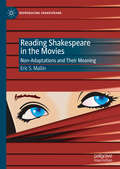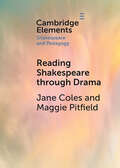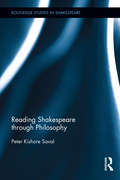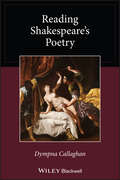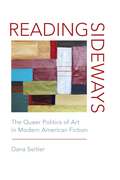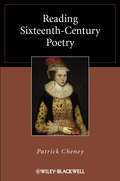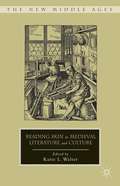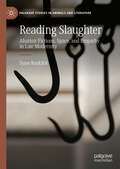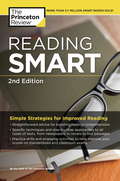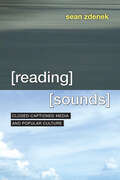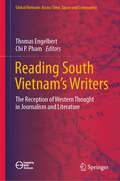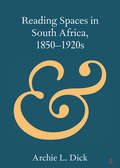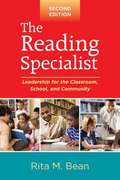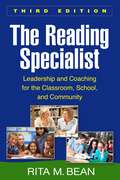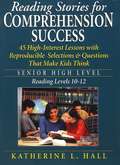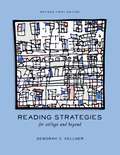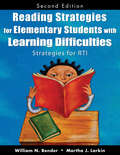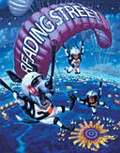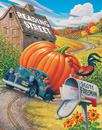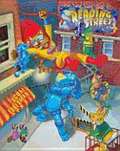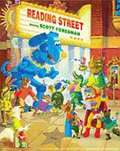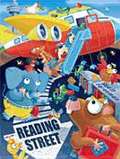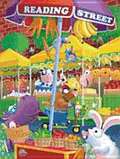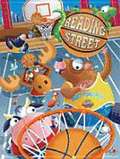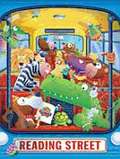- Table View
- List View
Reading Shakespeare in the Movies: Non-Adaptations and Their Meaning (Reproducing Shakespeare)
by Eric S. MallinReading Shakespeare in the Movies: Non-Adaptations and Their Meaning analyzes the unacknowledged, covert presence of Shakespearean themes, structures, characters, and symbolism in selected films. Writers and directors who forge an unconscious, unintentional connection to Shakespeare’s work create non-adaptations, cinema that is unexpectedly similar to certain Shakespeare plays while remaining independent as art. These films can illuminate core semantic issues in those plays in ways that direct adaptations cannot. Eric S. Mallin explores how Shakespeare illuminates these movies, analyzing the ways that The Godfather, Memento, Titanic, Birdman, and The Texas Chainsaw Massacre take on new life in dialogue with the famous playwright. In addition to challenging our ideas about adaptation, Mallin works to inspire new awareness of the meanings of Shakespearean stories in the contemporary world.
Reading Shakespeare through Drama (Elements in Shakespeare and Pedagogy)
by Jane Coles Maggie PitfieldReading Shakespeare through Drama arises out of case study research which focuses on reading as a socio-cultural practice. Underpinned by theories of reading, learning, drama and play, it is, nevertheless, rooted in the everyday work of secondary English classrooms. Utilising the dialogic ambiguities inherent in Shakespeare's playscripts, this collaborative approach to reading pays particular attention to adolescent readers as meaning-makers and cultural producers. The authors examine different iterations of 'active Shakespeare' pedagogies in the UK, the USA and Australia, drawing a distinction between 'reading through drama' as an approach and the theatre inflected practices promoted by well-known arts-based institutions. Observational and interview data highlight the importance of addressing issues concerning identity and representation that are inevitably raised by the study of canonical literature. Importantly, this Element situates teachers' practice within broader ideological contexts at institutional and national policy level, particularly from the perspective of England's highly regulated system of schooling.
Reading Shakespeare through Philosophy: Reading Shakespeare Through Philosophy (Routledge Studies in Shakespeare)
by Peter Kishore SavalReading Shakespeare through Philosophy advocates that the beauty of Shakespearean drama is inseparable from its philosophical power. Shakespeare’s plays make demands on us even beyond our linguistic attention and historical empathy: they require thinking, and the concepts of philosophy can provide us with tools to aid us in that thinking. This volume examines how philosophy can help us to re-imagine Shakespeare’s treatment of individuality, character, and destiny, particularly at certain moments in a play when a character’s relationship to space or time becomes an enigma to us. The author focuses on the dramatization of seemingly magical relationships between the individual and the cosmos, exploring and rethinking the meanings of 'individual', 'cosmos' and 'magic' through a conceptually acute reading of Shakespeare's plays. This book draws upon a variety of thinkers including Plato, Aristotle, Leibniz and Kant, in search of a revitalized philosophical criticism of Julius Caesar, Love’s Labor’s Lost, The Merchant of Venice, Timon of Athens, and Twelfth Night.
Reading Shakespeare's Poetry (Wiley Blackwell Reading Poetry)
by Dympna CallaghanReading Shakespeare’s Poetry A lively exploration of Shakespeare’s poems and how they speak to readers Reading Shakespeare’s Poetry presents a fresh interpretation of Shakespeare’s non-dramatic poems, providing insights into the individual poems, their themes and composition, and their relation to the cultural context of Shakespeare’s world. Dympna Callaghan considers what makes Shakespeare’s language poetic and shows how his poetry is comprised not only of lyrical intensity but also of the language of everyday life. Presented chronologically, lucidly-written chapters examine Venus and Adonis, Lucrece, The Phoenix and the Turtle, the Sonnets, and A Lover’s Complaint. Special attention is paid to the distinctive ways in which lineation, rhyme, verse forms, and meter serve to delineate or erase the boundaries of Shakespeare’s poetry. Throughout the book, the author explains how Shakespeare’s language is influenced by predecessors such as Ovid and Petrarch while highlighting how ideas about the social and cultural function of poetry permeate Shakespeare’s works. Offers an eminently readable yet scholarly exploration of the literary importance of Shakespeare’s poems Explains the technical features of Shakespeare’s poetic language Addresses the significance of the material form in which Shakespeare’s poems appear Includes a discussion of songs, poems, and sonnets embedded in Shakespeare’s dramatic verse Reading Shakespeare’s Poetry is both a fresh and indispensable guide to the poems and a significant critical intervention. This is a must-have book for scholars, students, and general readers alike.
Reading Sideways: The Queer Politics of Art in Modern American Fiction
by Dana SeitlerReading Sideways explores the pivotal role that various art forms played in American literary fiction in direct relation to the politics of gender and sexuality in works of modern American literature. It tracks the crosswise circulation of aesthetic ideas in fiction and argues that at stake in the aesthetic turn of these works was not only the theorization of aesthetic experience but also an engagement with political arguments and debates about available modes of sociability and sexual expression. To track these engagements, its author, Dana Seitler, performs a method she calls “lateral reading,” a mode of interpretation that moves horizontally through various historical entanglements and across the fields of the arts to make sense of—and see in a new light—their connections, challenges, and productive frictions. Each chapter takes a different art form as its object: sculpture, portraiture, homecraft, and opera. These art forms appear in some of the major works of literature of the period central to negotiations of gender, race, and sexuality, including those by Henry James, Davis, Willa Cather, Du Bois, Sarah Orne Jewett, and Mary Wilkins Freeman. But the literary texts that each chapter of this book takes as its motivation not only include a specific art form or object as central to its politics, they also build an alternative aesthetic vocabulary through which they seek to alter, challenge, or participate in the making of social and sexual life. By cultivating a counter-aesthetics of the unfinished, the uncertain, the small, the low, and the allusive, these fictions recognize other ways of knowing and being than those oriented toward reductively gendered accounts of beauty, classed imperatives established by the norms of taste, or apolitical treatises of sexual disinterestedness. And within them—and through “reading sideways”—we can witness the coming-into-legibility of a set of diffuse practices that provide a pivot point for engaging the political methods of minoritized subjects at the turn of the twentieth century.
Reading Sixteenth-Century Poetry (Wiley Blackwell Reading Poetry Ser. #7)
by Patrick CheneyReading Sixteenth-Century Poetry combines close readings of individual poems with a critical consideration of the historical context in which they were written. Informative and original, this book has been carefully designed to enable readers to understand, enjoy, and be inspired by sixteenth-century poetry. Close reading of a wide variety of sixteenth-century poems, canonical and non-canonical, by men and by women, from print and manuscript culture, across the major literary modes and genres Poems read within their historical context, with reference to five major cultural revolutions: Renaissance humanism, the Reformation, the modern nation-state, companionate marriage, and the scientific revolution Offers in-depth discussion of Skelton, Wyatt, Surrey, Isabella Whitney, Gascoigne, Philip Sidney, Spenser, Marlowe, Mary Sidney Herbert, Donne, and Shakespeare Presents a separate study of all five of Shakespeare’s major poems - Venus and Adonis, The Rape of Lucrece, 'The Phoenix and Turtle,' the Sonnets, and A Lover's Complaint- in the context of his dramatic career Discusses major works of literary criticism by Plato, Aristotle, Horace, Longinus, Philip Sidney, George Puttenham, Percy Bysshe Shelley, Seamus Heaney, Adrienne Rich, and Helen Vendler
Reading Skin In Medieval Literature And Culture
by Katie L. WalterSkin is a multifarious image in medieval culture: the material basis for forming a sense of self and relation to the world, as well as a powerful literary and visual image. This book explores the presence of skin in medieval literature and culture from a range of literary, religious, aesthetic, historical, medical, and theoretical perspectives.
Reading Slaughter: Abattoir Fictions, Space, and Empathy in Late Modernity (Palgrave Studies in Animals and Literature)
by Sune BorkfeltReading Slaughter: Abattoir Fictions, Space, and Empathy in Late Modernity examines literary depictions of slaughterhouses from the development of the industrial abattoir in the late nineteenth century to today. The book focuses on how increasing and ongoing isolation and concealment of slaughter from the surrounding society affects readings and depictions of slaughter and abattoirs in literature, and on the degree to which depictions of animals being slaughtered creates an avenue for empathic reactions in the reader or the opportunity for reflections on human-animal relations. Through chapters on abattoir fictions in relation to narrative empathy, anthropomorphism, urban spaces, rural spaces, human identities and horror fiction, Sune Borkfelt contributes to debates in literary animal studies, human-animal studies and beyond.
Reading Smart, 2nd Edition: Simple Strategies for Improved Reading
by Princeton ReviewSIMPLE STRATEGIES CAN MAKE YOU A BETTER READER.Being "good at reading" isn't just about speed--it's about being able to read through info, quickly sort out what's important, and draw useful connections. That's why we at The Princeton Review created Reading Smart, a book designed to help people who have a hard time keeping up with assignments, understanding novels, or even absorbing news articles. Reading Smart will give you the skills and strategies you need to read efficiently and build your confidence as both a reader and thinker.Within Reading Smart, you'll find:TECHNIQUES THAT ACTUALLY WORK.* Straightforward advice for boosting reading comprehension* Specific techniques and step-by-step approaches to all types of texts, from newspapers to novels to test passages* Tips for pacing yourself to get the most out of what you read* Comprehensive guidance on how to extract important information from passages, whether it's big-picture concepts or key detailsPRACTICE YOUR WAY TO EXCELLENCE.* Reading comprehension drills and exercises in every chapter to help improve your scores on standardized and classroom tests* Sample passages to help you get comfortable with different kinds of texts* Bonus online drills to help reinforce the reading skills and strategies covered in the book
Reading Sounds: Closed-Captioned Media and Popular Culture
by Sean ZdenekImagine a common movie scene: a hero confronts a villain. Captioning such a moment would at first glance seem as basic as transcribing the dialogue. But consider the choices involved: How do you convey the sarcasm in a comeback? Do you include a henchman's muttering in the background? Does the villain emit a scream, a grunt, or a howl as he goes down? And how do you note a gunshot without spoiling the scene? These are the choices closed captioners face every day. Captioners must decide whether and how to describe background noises, accents, laughter, musical cues, and even silences. When captioners describe a sound--or choose to ignore it--they are applying their own subjective interpretations to otherwise objective noises, creating meaning that does not necessarily exist in the soundtrack or the script. Reading Sounds looks at closed-captioning as a potent source of meaning in rhetorical analysis. Through nine engrossing chapters, Sean Zdenek demonstrates how the choices captioners make affect the way deaf and hard of hearing viewers experience media. He draws on hundreds of real-life examples, as well as interviews with both professional captioners and regular viewers of closed captioning. Zdenek's analysis is an engrossing look at how we make the audible visible, one that proves that better standards for closed captioning create a better entertainment experience for all viewers.
Reading South Vietnam's Writers: The Reception of Western Thought in Journalism and Literature (Global Vietnam: Across Time, Space and Community)
by Chi P. Pham Thomas EngelbertThis edited book examines how South Vietnam’s (formerly the Republic of Vietnam 1955-1975) literary and journalistic writers were perceived and - potentially - influenced by Western thought, led by thinkers such as Jean-Paul Sartre, Franz Kafka, Sigmund Freud, Thomas Mann, Martin Heidegger, Hermann Hesse, Edmund Husserl, Stefan Zweig, Graham Greene, and Somerset Maugham. The book reveals the dynamism and diversity of Western thought in individual literary texts, as well as among the authors themselves. The volume considers how writers and their texts engaged with issues that are socially, culturally, politically, and philosophically significant to Vietnam and beyond, past and present. This approach to South Vietnam’s literary and journalistic tradition enables an alternative plural, inclusive view of the significance of these texts, which are shown to be neither exclusively anti-Communist nor “bourgeois individualist” (cá nhân tiểu tư sản), as they have so often been interpreted both in and outside of Vietnam. Such an interpretation problematically retains the marginal position of South Vietnam’s literature in mainstream Vietnamese literature, and in the literatures of the host countries where these Vietnamese authors have migrated, settled, and continued to write following the 'Fall of Saigon'. This volume presents itself as a key text for those studying Asian and postcolonial literatures, as well as scholars in the humanities researching Vietnam – its history, politics, society, and culture.
Reading Spaces in South Africa, 1850–1920s (Elements in Publishing and Book Culture)
by Archie L. DickVoluntary societies and government initiatives stimulated the growth of reading communities in South Africa in the second half of the nineteenth century. A system of Parliamentary grants to establish public libraries in country towns and villages nurtured a lively reading culture. A condition was that the library should be open free-of-charge to the general public. This became one more reading space, and others included book societies, reading societies, literary societies, debating societies, mechanics institutes, and mutual improvement societies. This Element explains how reading communities used these spaces to promote cultural and literary development in a unique ethos of improvement, and to raise political awareness in South Africa's colonial transition to a Union government and racial segregation.
Reading Specialist, Second Edition
by Rita Bean Joanne CaldwellA trusted resource for day-to-day guidance, professional development, and certification courses, this nuts-and-bolts text explains the varied roles and responsibilities of reading specialists in grades K 12. Rita Bean offers evidence-based best practices for working with struggling readers, supporting teachers, planning curricula, and collaborating with parents, community programs, and granting agencies. Useful features include discussion questions, self-reflective exercises, and lively examples and vignettes. New to This Edition Expanded coverage of middle and secondary school reading programs. Addresses the reading specialist's role in a response-to-intervention framework. Additional chapter on literacy coaching. Suggested learning exercises and activities for each chapter are provided in an appendix. Many new or revised examples and reflection questions.
Reading Specialist, Third Edition
by Rita M. BeanA trusted practitioner guide and course text, this book provides a complete introduction to the multiple roles of the reading specialist in grades PreK-12. Rita M. Bean offers evidence-based best practices for working with struggling readers; supporting teachers through professional development and coaching; planning curricula; assessing at the individual, classroom, and school levels; and building strong school, family, and community partnerships. User-friendly features include helpful classroom vignettes, questions for discussion and reflection, follow-up activities, and ideas for instructors and workshop leaders. Reproducible forms and worksheets can be downloaded and printed in a convenient 8 1/2" x 11" size. New to This Edition *New overarching framework that connects literacy leadership more directly to classroom instruction and assessment. *Links to the Common Core State Standards (CCSS) and new standards-based examples included throughout. *Expanded coverage of literacy coaching, middle and high school grades, and response to intervention. *Chapters now begin with key questions and include annotated resources for further reading.
Reading Stories for Comprehension Success (Senior High Level)
by Katherine L. HallA flexible, high-interest program that can be used with all regular and special students, grades 10-12. Each volume provides over 45 factual stories with related teaching materials, 15 at each level.
Reading Strategies for College & Beyond (Revised First Edition)
by Deborah J. KellnerThis book offers simple, practical strategies designed to lead students to a successful college career. These strategies have a wide range of applications and can be useful tools for both students and teachers seeking new ways to engage developmental students.
Reading Strategies for Elementary Students With Learning Difficulties: Strategies for RTI
by William N. Bender Martha J. LarkinPacked with research-based strategies for use with RTI, this resource covers brain-compatible reading instruction for students with learning disabilities or reading difficulties.
Reading Street
by Candy Dawson Boyd Sharon Vaughn Camille Blachowicz Wendy Cheyney Connie Juel Edward Kame'Enui Donald Leu Jeanne Paratore Sam Sebesta Deborah Simmons Susan Watts-Taffe Karen Kring Wixson Peter Afflerbach P. David PearsonNIMAC-sourced textbook
Reading Street
by Candy Dawson Boyd Sharon Vaughn Camille Blachowicz Wendy Cheyney Connie Juel Edward Kame'Enui Donald Leu Jeanne Paratore Sam Sebesta Deborah Simmons Susan Watts-Taffe Karen Kring Wixson Peter Afflerbach P. David PearsonNIMAC-sourced textbook
Reading Street
by Candy Dawson Boyd Sharon Vaughn Camille Blachowicz Wendy Cheyney Connie Juel Edward Kame'Enui Donald Leu Jeanne Paratore Sam Sebesta Deborah Simmons Susan Watts-Taffe Karen Kring Wixson Peter Afflerbach P. David PearsonNIMAC-sourced textbook
Reading Street
by Candy Dawson Boyd Sharon Vaughn Camille Blachowicz Wendy Cheyney Connie Juel Edward Kame'Enui Donald Leu Jeanne Paratore Sam Sebesta Deborah Simmons Susan Watts-Taffe Karen Kring Wixson Peter Afflerbach P. David PearsonNIMAC-sourced textbook
Reading Street
by Candy Dawson Boyd Sharon Vaughn Camille Blachowicz Wendy Cheyney Connie Juel Edward Kame'Enui Donald Leu Jeanne Paratore Sam Sebesta Deborah Simmons Susan Watts-Taffe Karen Kring Wixson Peter Afflerbach P. David PearsonNIMAC-sourced textbook
Reading Street
by Candy Dawson Boyd Sharon Vaughn Camille Blachowicz Wendy Cheyney Connie Juel Edward Kame'Enui Donald Leu Jeanne Paratore Sam Sebesta Deborah Simmons Susan Watts-Taffe Karen Kring Wixson Peter Afflerbach P. David PearsonNIMAC-sourced textbook
